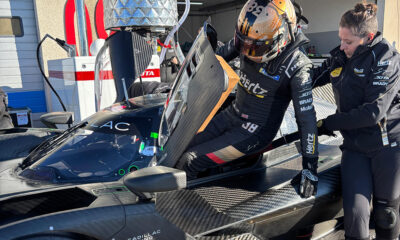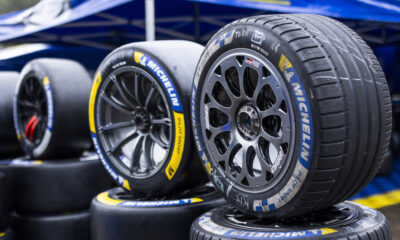The head of Ferrari’s sports car racing department believes the manufacturer has an “opportunity” to draw on the expertise of its Formula 1 team for the development of its Le Mans Hypercar, which is set to hit the track next spring for a 2023 race debut.
The Italian marque recently declared its commitment to the LMH formula with a program that will deliver Maranello’s first factory involvement at the top level of prototype racing in half a century.
The project will involve staff from different areas of the Ferrari group, according to Antonello Coletta who is the director of the Competizione GT sports car racing division.
Personnel currently working on Ferrari’s GT racing projects will be heavily involved, while members of the Grand Prix team and road car department are also set to contribute their skills and create a link between three hybrid powertrain programs.
Formula 1’s introduction of a budget cap for the 2021 season has enabled Ferrari to move some of its staff from that program to its new flagship sports car racing venture.
However, Coletta stressed that the reduction of the F1 team budget to $145 million for this year did not influence Ferrari’s board-level decision to approve an LMH program.
“If we share with F1, it’s good for us,” said Coletta. “If we can consider some people from the F1 department, why not?
“But the decision [to do LMH] has been for a strategic matter and not as a consequence of the new F1 rules.
“Of course the expertise of the F1 department is consistent and will be an opportunity for us. Ferrari is one company and it’s normal that we share all the experience that we have in our factory.
“It is normal for us… but not because we are in LMH. In GTE, it’s exactly the same [where] we don’t have the hybrid. In any case, we share all the experience that we have.”
Coletta explained that the composition of Ferrari’s LMH team is “a work in progress” and that the company is not yet ready to divulge the individuals who are set to lead the technical side of the project.
But he indicated that “more and more people” from the GT programs will go on to work on LMH, combined with personnel bringing “good experience” from other departments.
“It’s possible that we are under the same roof and Ferrari is just one,” said Coletta.
“With the new rules in F1, it should mean that we consider some people of the F1 department. But in any case, our decision is not the consequence of the new rules of F1.”
Rather, Ferrari’s decision to re-enter prototype racing was made on the “strategic” basis of it being able to compete for outright victories in events like the 24 Hours of Le Mans with a vehicle that provides an identifiable link to its road car range.
This desire helped sway its choice to pursue LMH over the global LMDh platform which, although cheaper, would have prevented Ferrari from producing a true car of its own by cornering it into selecting from one of four designated LMP2 chassis builders.
“To have a link, for me, is to have the engine or the hybrid parts for example,” said Coletta.
“These are parts that we can put on the road cars of the future, because why not? We can make an experience today and put on the road cars tomorrow.”
When asked about the factors that made LMH financially viable, Coletta indicated that the F1 budget cap came as a “coincidence” and that other reasons took precedence.
“Year by year, it will be more or less the same as GTE or not more expensive,” he said.
“When we decide to go ahead, we take the actual economics and the future economics.
“The most important difference is the cost is completely less expensive than LMP1 [was]. In any case, the decision is not for the economics. The decision is strategic.”
LMH Car Type Remains Under Wraps
Ferrari has yet to confirm the type of LMH car that it will develop, with Coletta declining to specify whether it will use a road-going product as a base or come up with a pure prototype featuring road model styling cues.
Toyota and Peugeot are producing LMH cars to the latter set of rules for 2021 and 2022, respectively. The canceled Aston Martin Valkyrie project was set to be road car-based.
When asked which subset of the LMH technical rules Ferrari will be following, Coletta said: “I prefer to answer this question in the future.
“Now we consider both ideas. Honestly – in my head – the solution is clear. But for the moment I prefer to maintain a cover on this decision.”
Ferrari has set itself the aim of an early 2023 race debut. Its target for the first track test is April or May next year, but this will depend on how the coronavirus pandemic pans out.
According to Coletta, restrictions linked to the health crisis cost Ferrari “two to three months” of work in the earliest stages of its program but he’s confident that it will be ready to compete in “the first race” of 2023.
The date of that first race could depend on whether IMSA allows LMH cars to compete in its top class. IMSA’s season typically starts with the Rolex 24 at Daytona each January, several weeks before the WEC usually begins.
Ferrari is understood to be eager for LMH cars to run in both the WEC and IMSA.




























